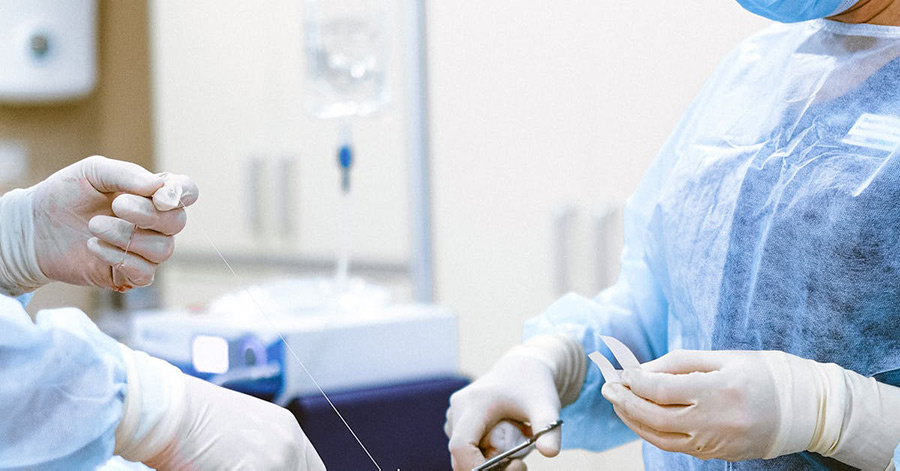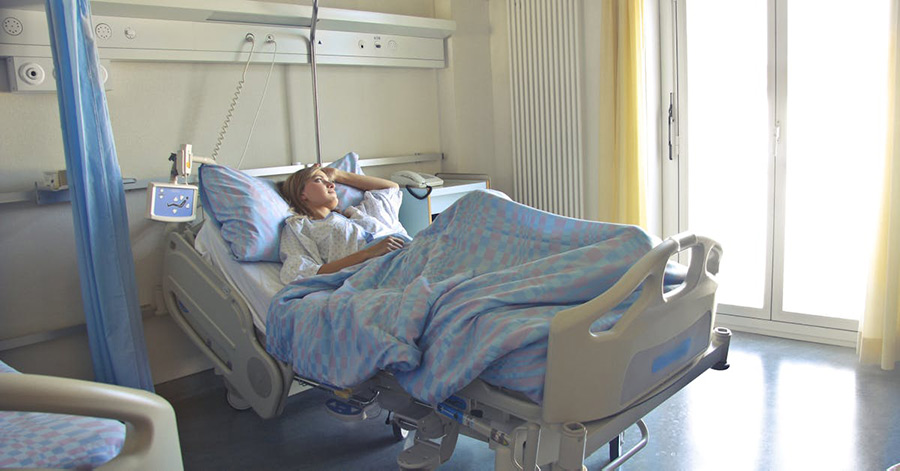Medical and surgical lighting – Optimal lighting is essential for success in operating rooms and medical examination areas. This specialized lighting is designed to provide intense, shadow-free light to enable precision during surgical procedures. With the integration of IoT technology, such lighting can now be dynamically adjusted to meet the specific requirements of each procedure, enhancing safety and efficiency in healthcare settings.
Read more: www.optoga.com/en/iot-led/

Medical and surgical lighting – Its vital role
In the high-stakes environment of healthcare, particularly within the precincts of an operating theatre, the significance of medical and surgical lighting cannot be overstated. Proper lighting is not just a matter of visibility; it is a vital tool that contributes to the success of surgical outcomes. High-quality surgical lighting systems ensure that surgeons have a clear view of the operative field, enhancing their ability to discern fine details, distinguish tissue textures, and note subtle variations in color. The absence of shadows and the provision of consistent, adjustable illumination are essential for the intricate work of surgical procedures.
But first – What is IoT LED?
IoT LED refers to light-emitting diode (LED) technology that is integrated into the Internet of Things (IoT). This integration allows LED lighting systems to connect to the internet or other networked devices, enabling remote control, automation, and data exchange. IoT LED systems can be managed through smartphone apps or voice-controlled home automation systems, allowing users to adjust lighting settings such as color, brightness, and scheduling from anywhere. Additionally, these systems can gather and use data to optimize energy efficiency, improve lighting based on environmental conditions, or enhance security through motion detection. IoT LEDs are part of the broader trend of smart home and smart city technologies, offering innovative solutions for lighting and energy management.
The integration of IoT LED in medical and surgical lighting environments
The medical field is constantly evolving, with technology playing a pivotal role in enhancing patient care and surgical outcomes. One of the significant technological advancements is the integration of Internet of Things (IoT) with LED lighting technology in medical and surgical settings. This integration is revolutionizing how surgical procedures are carried out, offering unparalleled precision, efficiency, and flexibility. This article explores the impact of IoT LED lighting technology in medical and surgical lighting, highlighting its benefits and specific applications.
More on smart lighting: www.iotled.net/iot-smart-lighting-system/
Enhanced precision and visibility
Surgeons require a lighting solution that can illuminate the surgical field clearly, enhancing visibility without casting shadows or causing glare. Traditional lighting systems, while effective to a degree, often fall short in providing the adaptability required for the wide range of procedures performed in modern healthcare settings.
IoT LED lighting technology addresses these challenges head-on. For example, during complex cardiovascular surgeries, where visibility of the smallest veins and arteries is crucial, IoT-integrated LED lights can adjust their brightness and color temperature in real-time. This capability ensures that the surgical field is illuminated perfectly, allowing surgeons to perform with greater accuracy and reducing the risk of complications.
Customizable lighting environments
The integration of IoT technology with LED lighting brings an unprecedented level of customization to surgical lighting. Surgeons can tailor the lighting to the specific requirements of each procedure. For instance, in neurosurgery, distinguishing between healthy brain tissue and pathology is critical. IoT LED lighting systems can adjust to provide the optimal color temperature and intensity needed to enhance contrast and improve the surgeon’s ability to differentiate tissues.
This customization extends beyond brightness and color temperature. The direction of light can also be controlled, ensuring that deep cavities are illuminated without creating shadows. This feature is particularly beneficial in procedures where access is limited, and precision is paramount.
Efficiency and energy conservation
IoT LED lighting technology is not only superior in terms of performance but also in efficiency and sustainability. LED lights consume significantly less energy than traditional incandescent and halogen bulbs, which is crucial in healthcare settings where lights are operational for extended periods. The integration of IoT further enhances this efficiency by enabling smart energy management. Lights can be programmed to adjust automatically to the natural light in the room or to turn off when not in use, further reducing energy consumption.
Improved patient and staff experience
The benefits of IoT LED lighting technology extend beyond the surgical outcomes. The ability to adjust lighting to the precise needs of the surgical team can also reduce eye strain and fatigue, leading to better concentration and potentially reducing the risk of errors. Moreover, the improved lighting conditions contribute to a safer environment for both patients and healthcare professionals.
More about LED lighting in hospitals: www3.paho.org/disasters/dmdocuments/LED%20LIGHTING%20IN%20HOSPITALS%20Final.pdf

Future prospects – Smart healthcare environments
The healthcare industry’s journey towards digital transformation is poised to redefine the standards of patient care and operational efficiency. At the forefront of this transformation is the integration of Internet of Things (IoT) with LED lighting technology, promising to usher in a new era of smart healthcare environments. This vision encompasses not just enhanced operational efficiency but also a more intuitive, responsive, and patient-centered approach to healthcare delivery.
Intelligent lighting systems powered by AI and machine learning
The future of healthcare lighting lies in the integration of artificial intelligence (AI) and machine learning (ML) with IoT-enabled LED lighting systems. These advanced technologies can analyze vast amounts of data from previous surgeries and patient interactions to optimize lighting settings automatically for each procedure. By learning from past outcomes, these intelligent systems could predict the ideal lighting conditions needed to maximize visibility and minimize errors, significantly reducing setup times and allowing medical staff to dedicate more attention to patient care.
Imagine a scenario where, upon scheduling a surgery, the lighting system automatically adjusts to the surgeon’s preferences and the specific requirements of the procedure. This level of customization would not only improve the surgical environment but also enhance patient safety and the overall success rate of surgeries.
Seamless integration with other smart healthcare technologies
The potential of IoT LED lighting extends beyond illumination. By integrating with other smart technologies within healthcare facilities, lighting systems can play a crucial role in creating a more cohesive and responsive healthcare environment. For instance, connecting IoT LED lighting with patient monitoring devices can enable automatic adjustments in lighting based on real-time patient data. Such ambient light adjustments could help in creating a more comforting environment for patients, potentially speeding up recovery times and improving overall patient satisfaction.
Moreover, smart lighting could assist in infection control by using integrated UV light disinfection cycles during times when spaces are unoccupied, reducing the risk of hospital-acquired infections. This application of IoT LED lighting technology could significantly contribute to maintaining high standards of cleanliness and patient safety.
Enhancing patient experience and recovery
The integration of Internet of Things (IoT) LED lighting into healthcare settings marks a significant advancement in enhancing the patient experience and promoting more effective recovery processes. This innovative approach to healthcare environment management offers a blend of comfort, safety, and efficiency that directly benefits patients and healthcare providers alike.
Personalized healing environments
At the core of improving patient experience is the creation of personalized healing environments. IoT LED lighting technology allows for the adjustment of lighting conditions to mimic natural circadian rhythms, which is crucial for patients who spend extended periods indoors. This synchronization with natural light patterns can significantly improve sleep quality and accelerate recovery processes.
Moreover, the ability to personalize lighting settings for individual patients means that environments can be tailored to reduce anxiety and stress. Soft, warm lighting can create a soothing atmosphere for patients undergoing stressful treatments, while brighter settings can be used to energize patients during physical therapy sessions. This level of customization not only aids in physical recovery but also supports mental and emotional well-being.
Advanced monitoring and efficiency
Another remarkable benefit of IoT LED lighting is its role in non-invasive patient monitoring. By detecting changes in the environment or patient movement, smart lighting systems can alert medical staff to potential issues without continuous manual monitoring. This feature is particularly beneficial in scenarios where patient privacy is paramount or where minimal disturbance is desired, such as in neonatal care units or intensive care units.
This capability extends beyond patient monitoring to enhance the overall efficiency of healthcare provision. By automating routine checks and alerts, healthcare staff can allocate their time and resources more effectively, focusing on direct patient care and other critical tasks.
As we look to the future, the integration of IoT LED lighting in healthcare settings is expected to evolve further, incorporating more sophisticated AI and ML algorithms, and integrating with a broader range of healthcare technologies. This evolution will likely lead to the development of fully autonomous lighting systems capable of adapting in real-time to the changing conditions and needs of both patients and healthcare providers.
The road ahead for smart healthcare environments also includes the potential for greater energy savings and sustainability. By optimizing lighting based on actual usage and environmental conditions, healthcare facilities can significantly reduce their energy consumption, contributing to a more sustainable and cost-effective operation.

Conclusion about medical and surgical lighting
The vision of smart healthcare environments, enhanced by the integration of IoT LED lighting, AI, and ML, represents a significant leap forward in the way healthcare is delivered. This digital transformation promises not only to improve operational efficiencies and patient outcomes but also to create a more adaptive, responsive, and patient-focused healthcare experience. As technology continues to advance, the possibilities for innovation in healthcare environments are limitless, offering a brighter, smarter future for both healthcare providers and patients alike.
Next article: www.vvskonsult.net/tradlos-styrning-av-belysning/


